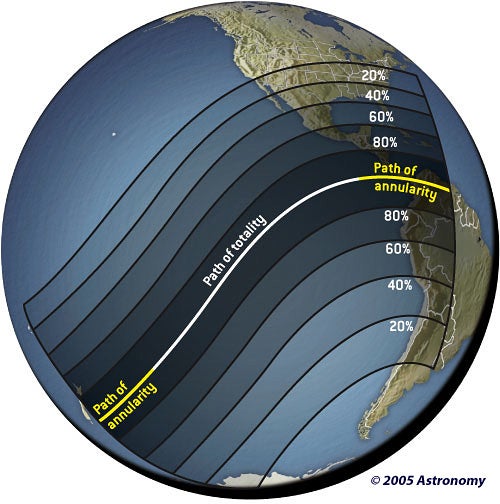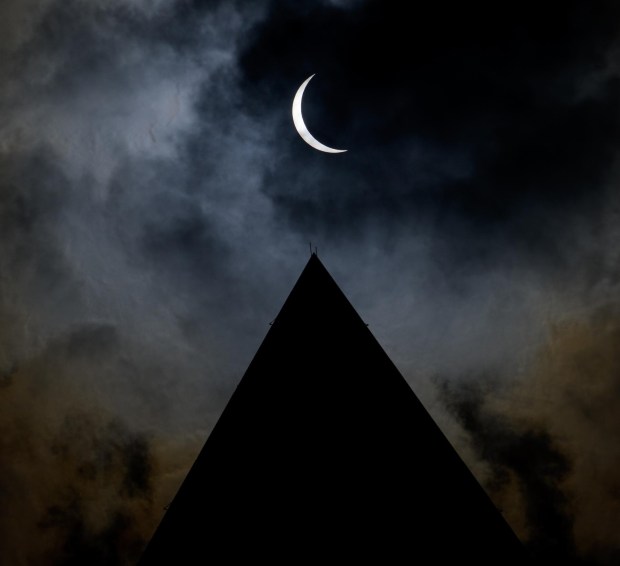Just 5 percent of all solar eclipses are hybrid — total over part of the path, and annular over the rest. This rarest type of solar eclipse returns on April 8 after a gap of 18 years.
The section of the eclipse track near local noon lies close enough to the Moon for the Moon to cover the Sun and create a brief total eclipse. But the ends of the track, around sunrise and sunset, lie far enough from the Moon that our satellite can’t cover the whole Sun. Observers there will see an annular eclipse, a thin ring of Sun surrounding the Moon.
On April 8, the central part of the Moon’s shadow traces a narrow path from east of New Zealand to northern South America. Maximum totality comes in the middle of the Pacific Ocean and lasts just 42 seconds. The longest annular eclipse — 34 seconds — occurs in Venezuela.
Southern North America and western South America will see a partial solar eclipse. Use the map at right to find out how much of the Sun the Moon will block from your location. As always, any time you observe the Sun when it is not totally eclipsed, use proper eye protection.
Astronomy magazine will chase the eclipse over its limited range on two trips, co-hosted by Astronomical Tours. Because the total eclipse path will not intersect land, both trips are by sea — one cruise skirts the Galapagos Islands and the other originates at Tahiti.
The first eclipse trip sails toward the eclipse point — 685 miles (1,100 kilometers) directly west of the Galapagos. David Eicher, editor of Astronomy, is joined by NASA’s Fred Espenak (“Mr. Eclipse”), and Williams College astronomer Jay Pasachoff.
Michael E. Bakich, Astronomy‘s associate editor, is joined by meteorite expert Michael D. Reynolds on the second cruise, currently sailing around Tahiti. On April 8, guests will witness a 34-second total solar eclipse, just north of Pitcairn Island, where direct descendants of the HMS Bounty‘s crew still live.











